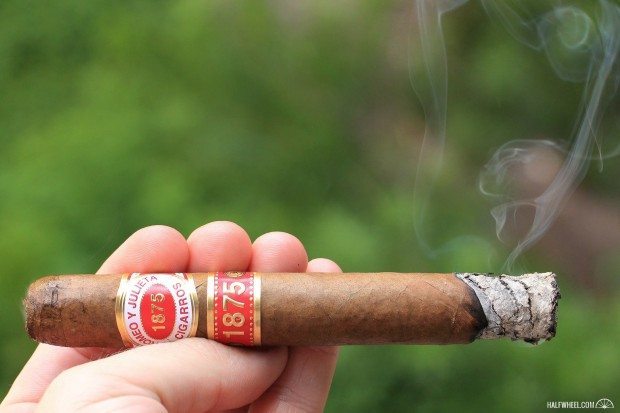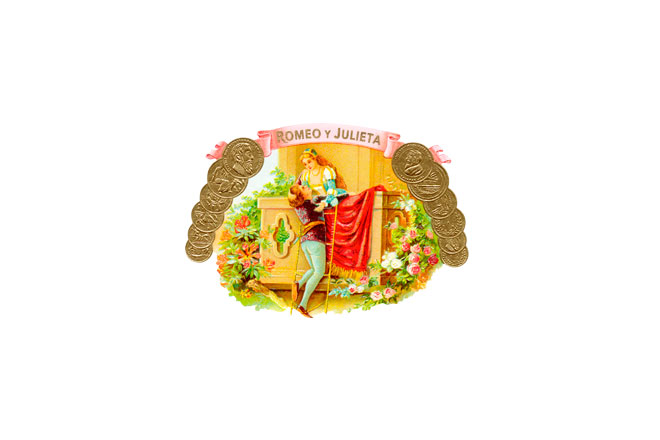Amid the myriad of new releases at the annual IPCPR Convention and Trade Show, there are always a few that stand out for one reason or another: size, price, presentation, or in this case, name. The 1875 Romeo y Julieta was one of Altadis USA’s featured new releases, along with the Espada by Montecristo and H. Upmann The Banker, and when Brooks Whittington and I first saw the cigar, we had the same reaction: isn’t the name a bit confusing?
The answer is undoubtedly yes, but Altadis USA seems to think the cigar will be able to carve out its own place both in retail humidors and in the minds of consumers.
Why is the name confusing, you ask? It starts with the 1875 component, which is the year the Cuban marca was fully established, though even that isn’t entirely accurate as the line was launched in the 1850s and officially registered in 1873. Hopefully, we all know about why Cuban cigars can’t be legally acquired in the United States, but that hasn’t stopped the names from transferring over. If you’ve ever purchased the non-Cuban Romeo y Julieta, you’ve likely noticed the 1875 date on the band, and there is currently a line called Romeo y Julieta 1875 in the company’s active portfolio, as well as the Romeo y Julieta 1875 Reserve Maduro.
Further adding to the confusion was that Altadis USA had seemingly gone away from the 1875 nomenclature in the brand’s two most recent releases, ROMEO by Romeo y Julieta and RyJ by Romeo y Julieta.
Either way, the company believes that this cigar—a brick and mortar exclusive—will be able to distinguish itself when it arrives in stores, which should happen shortly, as it’s shipping today. When it does arrive, there will be five sizes released, each coming in 15-count boxes though you may also seem them in the tray presentation that was at IPCPR.
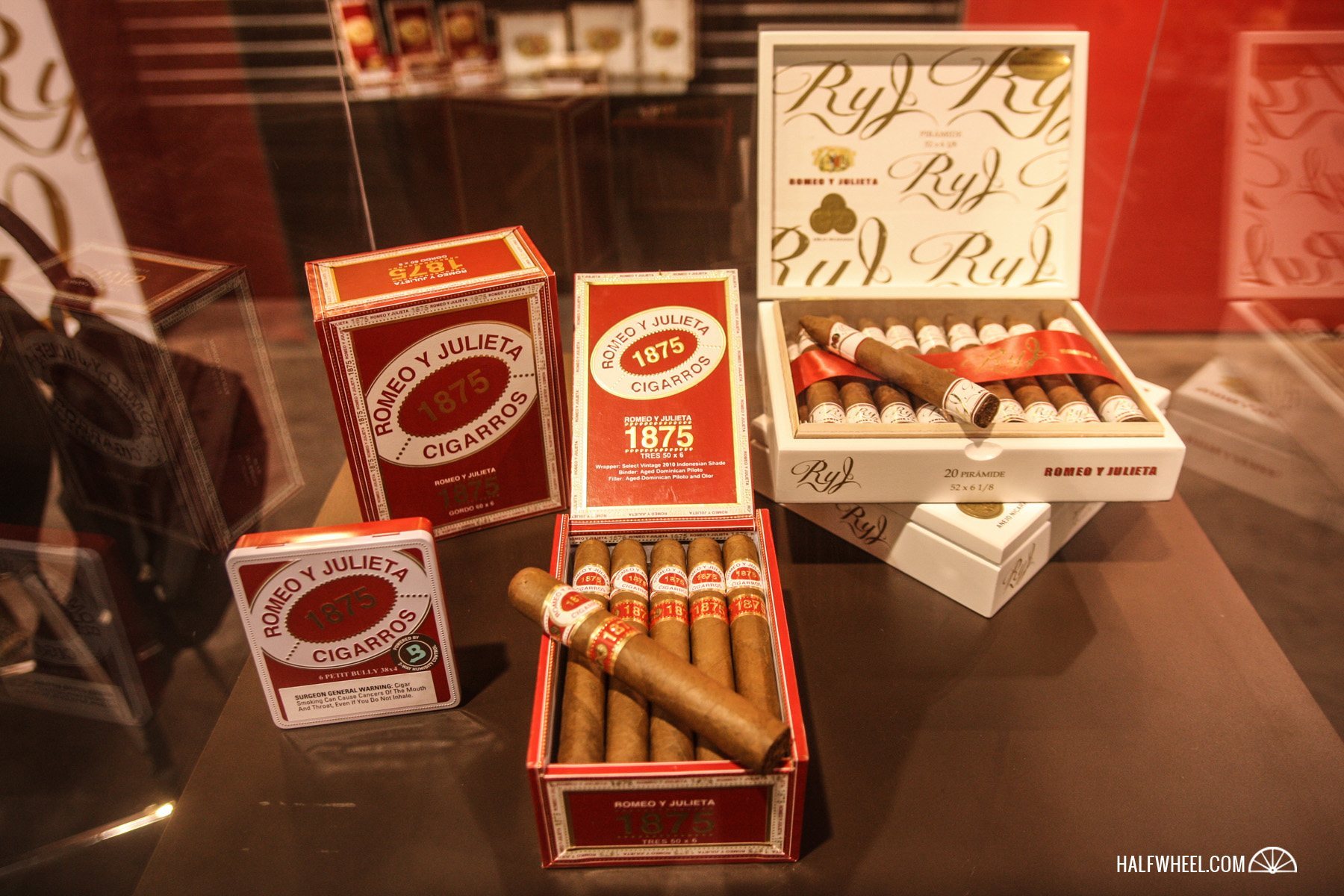
- 1875 Romeo y Julieta Bully (5 x 50) — $6.25 (Boxes of 15, $93.75)
- 1875 Romeo y Julieta Dos (5 1/2 x 44) — $6.15 (Boxes of 15, $92.25)
- 1875 Romeo y Julieta Tres (6 x 50) — $6.50 (Boxes of 15, $97.50)
- 1875 Romeo y Julieta Gordo (6 x 60) — $7.00 (Boxes of 15, $105.00)
- 1875 Romeo y Julieta Churchill (7 x 50) — $7.25 (Boxes of 15, $108.75)
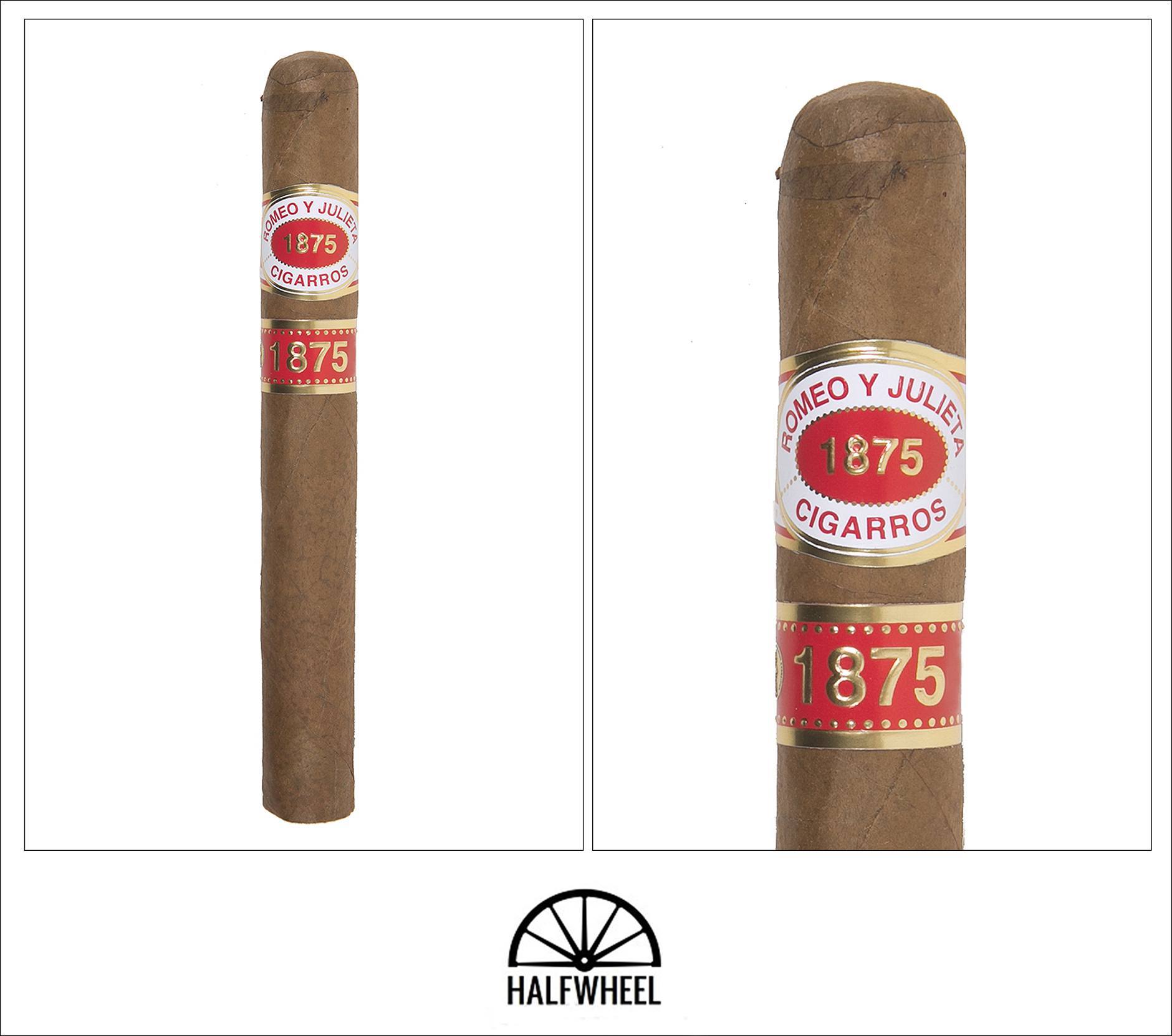
-
Cigar Reviewed: 1875 Romeo y Julieta Tres
-
Country of Origin: Honduras
-
Factory: La Flor De Copan
-
Wrapper: Indonesian Shade (2010)
-
Binder: Dominican Republic (Piloto)
-
Filler: Dominican Republic (Piloto and Olor)
-
Size: 6 Inches
-
Ring Gauge: 50
-
Vitola: Toro
-
MSRP: $6.50 (Boxes of 15, $97.50)
-
Release Date: August 15, 2014
-
Number of Cigars Released: Regular Production
-
Number of Cigars Smoked For Review: 3
I can’t say there is anything about the wrapper of the 1875 Romeo y Julieta that leads me to think it’s Indonesian, though a closer inspection reveals a bit of texture and mottling that I haven’t come across on wrappers from other origins. The dual bands make fairly clear the 1875 portion of the name, though again one could make the case that this particular presentation doesn’t do enough to differentiate just what this cigar is as compared to the rest of the line that incorporates the 1875 mark into the band. The cigar itself is smooth with a network of small, flat veins, not quite smooth but certainly nothing visible to suggest problems. The first cigar I sampled for this review showed much more softness in its lower third, with the areas under the band and midsection fairly firm. The aroma coming off the foot is certainly unique and should be the telltale sign of the wrapper’s origin, offering sweet cereal and a bit of chili sauce in an combination that is a bit unfamiliar but certainly agreeable, with somewhat varied notes of black pepper that will make it either hit or miss depending on your particular preferences.. The cold draw is on the tight side but the cigar doesn’t seem to be plugged, with a flavor that shifts more towards an old-fashioned donut minus the glaze but with no appreciable spice or pepper, though one of the three samples had distinct traces of the sweet chili sauce found on the nose.
One of the perks of smoking cigars outside in the Phoenix summers is that I generally have an evaporative cooler blowing my way, and as such the first aromas from a cigar after being lit tend to be a bit more intense as they get blown right towards me. In the case of the 1875 Romeo y Julieta, I’m greeted with smoke that packs a fairly wide variance of pepper, but still that sweet and subtle spice that seems to be the trademark of Indonesian tobacco. The notes might be a bit unfamiliar if you primarily smoke Nicaraguan, Dominican, Honduran or Cuban cigars, but it should be a fairly recognizable taste and an enjoyable one to boot. I am really hesitant to call this sensation a Thai chili paste, because I fear that it will call to mind Sriracha, which it most certainly isn’t. It’s more refined, a bit sweeter, and without the peppery kick of the iconic sauce. But to confuse the description a bit more, there’s a solid hit of black pepper that comes along and ratchets things up considerably, providing a stark contrast between retrohales and flavors in the first five or so puffs and the next five. The intensity of the pepper dials back just a bit but remains a consistent factor in the first third of the cigar, and in a slightly lesser quantity allows it to combine beautifully with the underlying sweetness. Other than the very first one, retrohales in the first third of the 1875 Romeo y Julieta offer a nose full of pepper-driven smoke, and one on cigar a good bit of sharpness, but also help the senses become that much more receptive to all that the cigar is offering. The burn has been very good to this point, a bit wavy of a line but nothing that isn’t easily corrected or likely the result of a bit of user error.
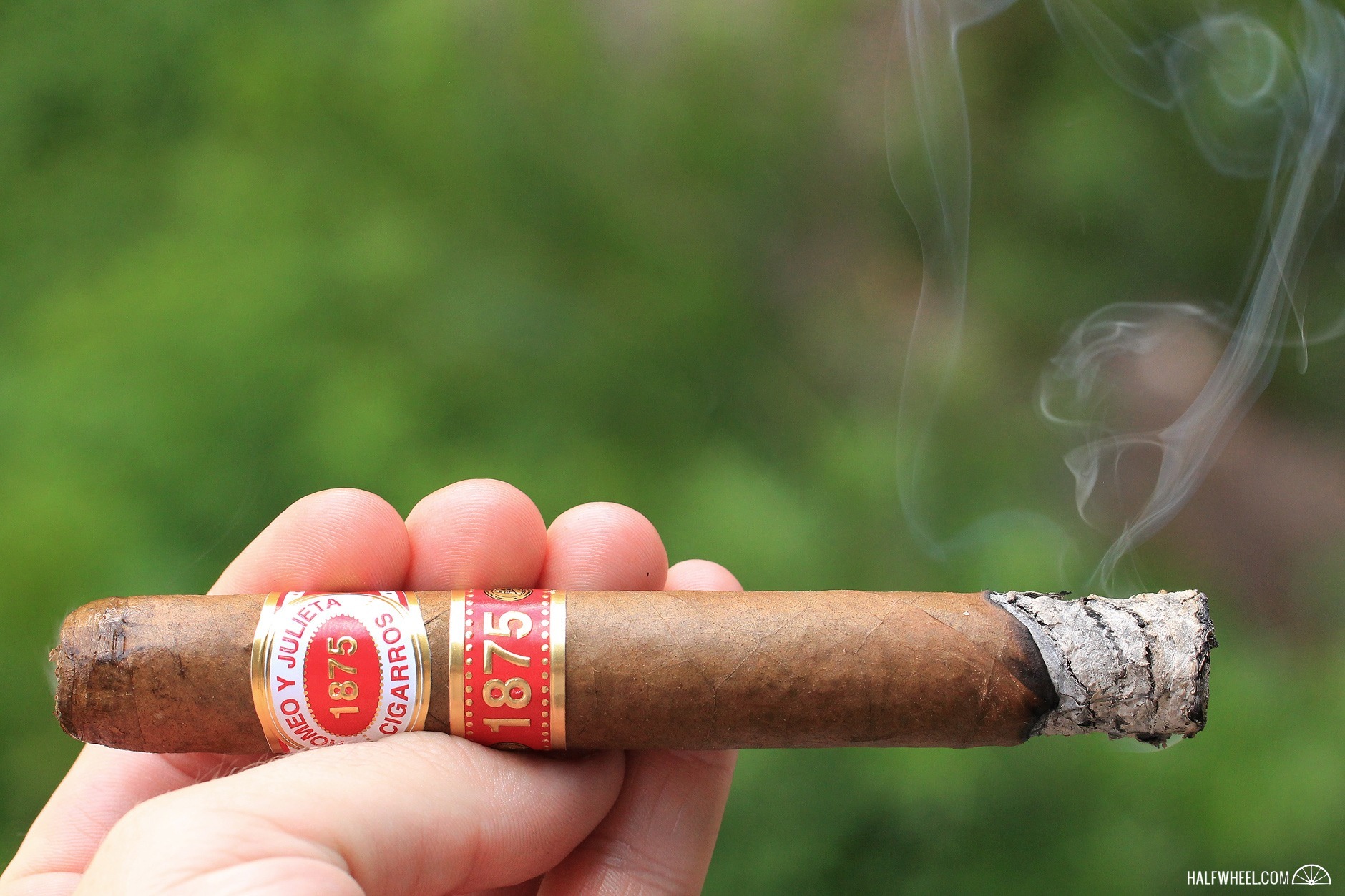
The intensity of the flavor continues to build at the cigar makes its way into its second third, with the individual notes coming together for more complexity while touches of wood come along and add a drying quality to the smoke as well some additional kick. The subtle sweetness that was noticeable in the first third is still around, but seems to be getting quickly pushed to the side by the more dominant strength and pepper. Retrohales continue to increase in strength until it’s almost impossible to enjoy one just past the midpoint, thanks to tons of white pepper and a good bit of earthy chalk. In somewhat of an unfamiliar request, I want the 1875 Romeo y Julieta to mellow out and become milder, giving the Indonesian wrapper more of a chance to breathe and show off its unique flavors and aromas. There are times when it feels like the strength and intensity are only being added for their own sake, not for the benefit of my palate or nose.

The final third of the 1875 Romeo y Julieta Tres sees the cigar continue to build in intensity, almost oversharpening the notes to become a bit harsh in the throat. It’s certainly much more full-bodied than I would have given it credit for, and while the pepper isn’t driving the flavor as much as it had been earlier, it is still a fairly significant factor. If you can handle the increasing intensity of flavor, there’s nothing to stop you from taking the cigar fairly close to the point where it’s not feasible to hold onto without the assistance of a draw poke or other device; otherwise you might find that you’ve had enough with as much as two inches left to burn. Once again though, I find myself almost pleading with the flavors to relax and mellow out, as it seems this style of flavor punch is just too much for my preference.
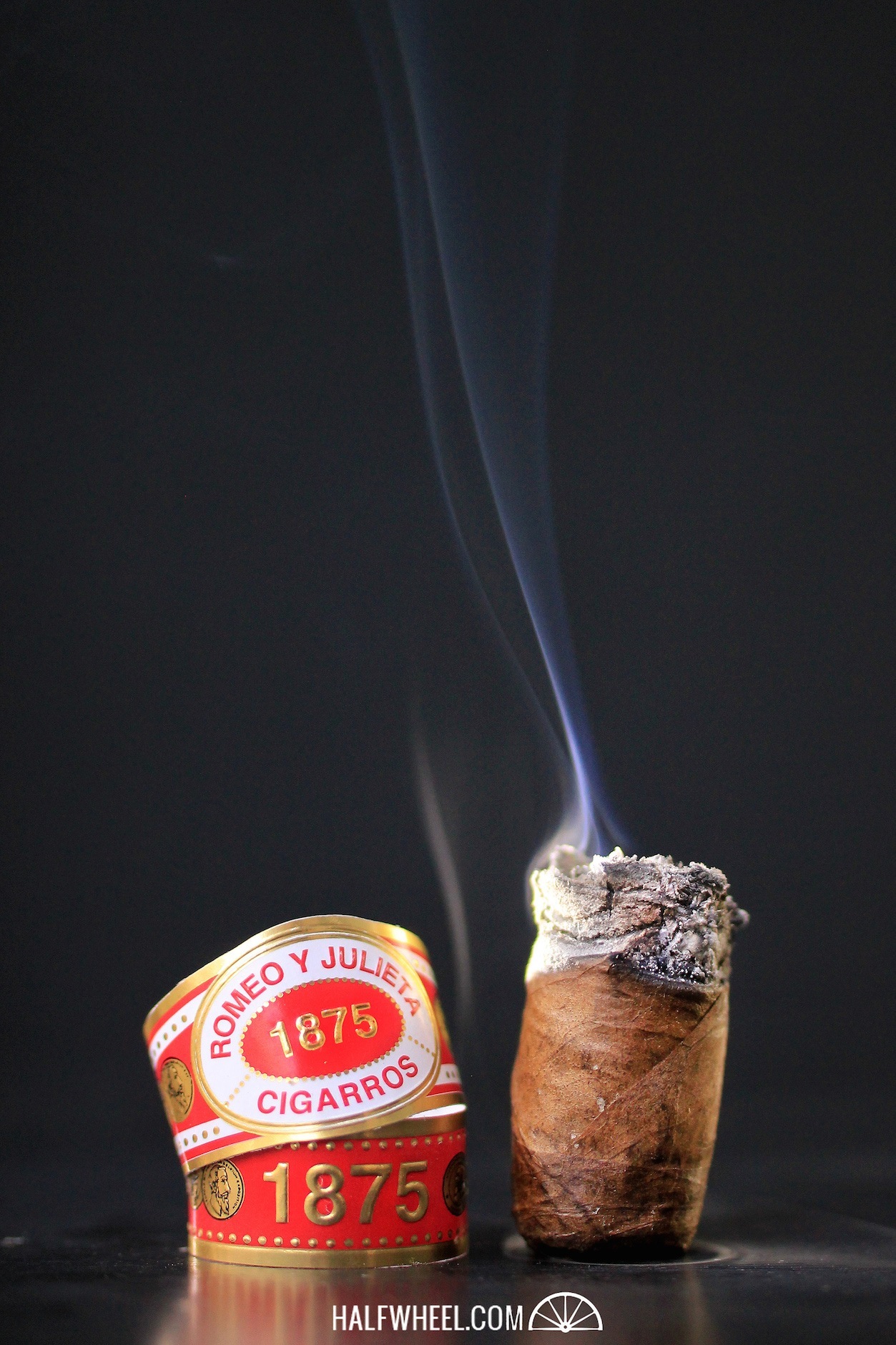
Final Notes
- Again, you have to make sure you are getting the cigar you think you are getting. This is the 1875 Romeo y Julieta, not the Romeo y Julieta 1875, which is a completely separate line.
- The vitola names should do a bit to help clarify any confusion, as well as the secondary band that has 1875 in big gold numbers.
- For the intensity of flavor the dominates the second half, I wouldn’t describe this as an overly strong cigar in terms of nicotine content. Almost the entire effect of this cigar is felt above the neck.
- William Shakespeare was believed to have written Romeo and Juliet between 1591 and 1595, with the first publication happening in 1597.
- However, it is based on The Tragicall Historye of Romeus and Juliet, which traces its history back to its first publication in 1562 by Arthur Brooke. That work is said to borrow from an Italian novella by Matteo Bandello, while there is another theory that says it comes from a French version which involves a man by the name of Reomeo Titensus and Juliet Bibleotet by Pierre Boaistuau, published by Richard Tottell. (Via Wikepedia)
- I can’t remember the last time I smoked a non-Cuban Romeo y Julieta without it being for the purpose of a review, such as when I smoked the Romeo y Julieta Exclusivo Para TAA by José Seijas in February 2012. I know I’ve smoked a few of the ROMEO and RyJ, but not enough to have them really etch a spot in my mind, so I can’t say I went into this cigar with many preconceived notions about what it would taste like.
- I have never been a big fan of the Cuban Romeo y Julieta marca, though I don’t avoid them when offered.
- The Cuban Romeo y Julieta is one of the seven global brands with worldwide availability, along with Cohiba, H. Upmann, Hoyo de Monterrey, Jose L. Piedra, Montecristo and Partagas.
- Final smoking time was one hour and 50 minutes on average.
- The for this review were provided by Altadis USA at the 2014 IPCPR Convention and Trade Show.
- Site sponsor Atlantic Cigar carries Romeo y Julieta, but has not yet listed the 1875 Romeo y Julieta for sale.
Everything through the first third of the 1875 Romeo y Julieta had me ready to chalk this cigar up as a winner and hand over an easy recommendation. But the transitions and shifts in flavor intensity not only through me for a loop but had me wondering just why the path for this cigar was drawn up the way it was. I'm assuming the Indonesian wrapper was getting the bulk of the spotlight early on, and had it stayed front and center, I would have been perfectly happy and given this cigar several additional points. Rather, it's pushed aside for a flavor profile that is hard for me to find real enjoyment in. Hopefully the 1875 Romeo y Julieta comes together better with some time and rest, because there are some very enjoyable flavors in there that just need to get back on the track set by the first few inches.

